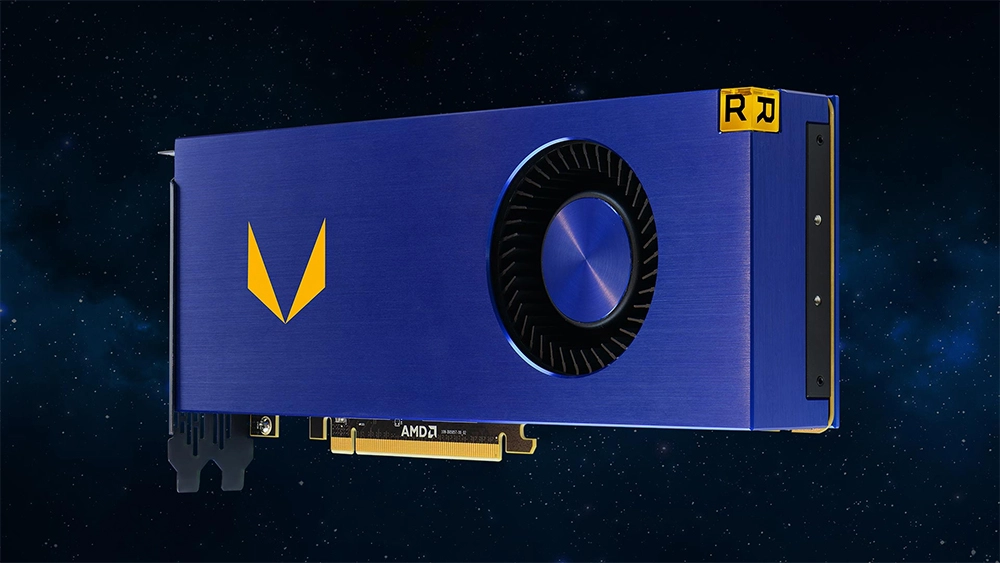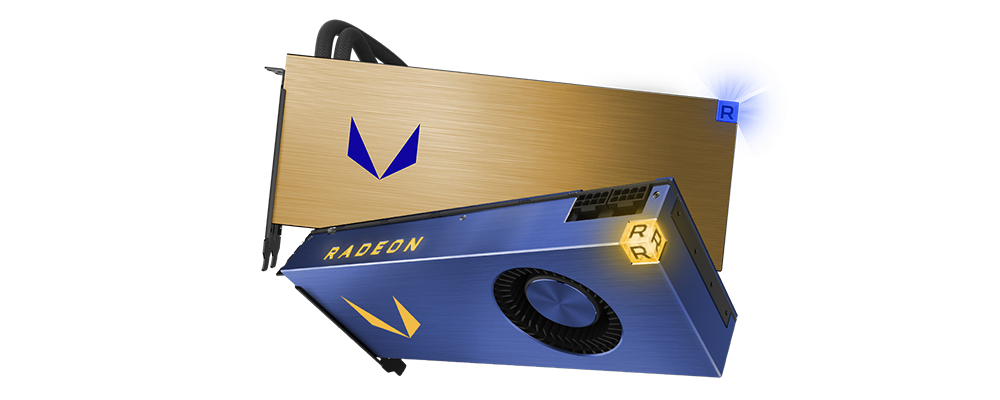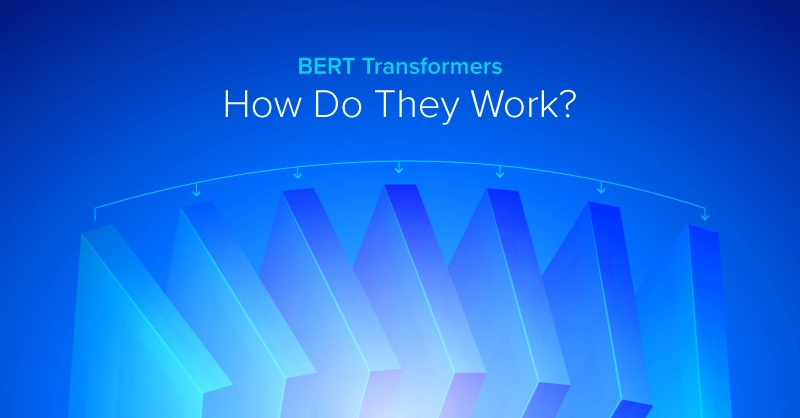
Radeon Vega Frontier Edition Overview
AMD has been shaking things up this year with its recent technological advancements. First, they unveiled their new 16 core, 32 thread count Ryzen Threadripper central processing unit (CPU). Following the Threadripper announcement, AMD launched their newest workstation graphics processing unit (GPU), the Radeon Vega Frontier Edition. This new GPU utilizes the new Vega architecture which is both more powerful and energy-efficient compared to the previous generation architecture, Polaris. It is important to note that this new GPU is primarily meant for workstation applications. However, the new card is plenty capable of handling any new video games on with ease as well as other consumer applications.
Who Will Be Using This Card?
AMD's business model has always been to provide the latest technology hardware at very attractive price points. They are applying this same strategy with the Radeon Vega Frontier Edition GPU and marketing it towards the Deep Learning, Media & Entertainment, and Design & Manufacturing markets. This means they are supplying an accessible option for those looking for the best price per performance from their GPUs.

Specification Comparison
AMD's previous reigning champion card was the Radeon Pro Duo. While it may initially appear that Vega specifications are only slightly higher than the Pro Duo, the Duo is technically two GPUs on a single card. So the fact that the new card is able to beat essentially two previous-generation GPU's is an impressive feat. The Radeon Vega Frontier Edition tops the Pro Duo by having both a higher base and boost clock, which equates to higher overall TeraFLOPs performance, especially at half-precision. While the Vega card technically has lower memory clocks, those looking to buy should keep in mind that it is utilizing the new High Bandwidth Memory 2 (HBM2) interface. HBM2 memory has a higher memory bus width that results in double the total memory bandwidth. The full specification comparison can be seen below:
| Radeon Vega Frontier Edition | Radeon Pro Duo (Polaris) | Radeon Pro WX 7100 | Radeon Fury X | |
| Stream Processors | 4096 | 2x 2304 | 2304 | 4096 |
| Texture Units | - | 2x 144 | 144 | 256 |
| ROPs | 64 | 2x 32 | 32 | 64 |
| Base/Typical Clock | 1382MHz | N/A | N/A | N/A |
| Peak/Boost Clock | 1600MHz | 1243MHz | 1243MHz | 1050MHz |
| Single Precision | 13.1 TFLOPS | 11.5 TFLOPS | 5.7 TFLOPS | 8.6 TFLOPS |
| Half Precision | 26.2 TFLOPS | 11.5 TFLOPS | 5.7 TFLOPS | 8.6 TFLOPS |
| Memory Clock | 1.89 Gbps HBM2 | 7 Gbps GDDR5 | 7 Gbps GDDR5 | 1 Gbps HBM |
| Memory Bus Width | 2048-bit | 2x 256-bit | 256-bit | 4096-bit |
| Memory Bandwidth | 483 GB/sec | 2x 224 GB/sec | 224 GB/sec | 512 GB/sec |
| VRAM | 16 GB | 2x 16 GB | 8 GB | 4 GB |
| Typical Board Power | <300W | 250W | 130W | 275W |
| GPU | Vega (1) | Polaris 10 | Polaris 10 | Fiji |
| Architecture | Vega | Polaris | Polaris | GCN 1.2 |
| Manufacturing Process | GloFo 14nm | GloFo 14nm | GloFo 14nm | TSMC 28nm |
| Launch Date | 06/2017 | 05/2017 | 10/2016 | 06/24/15 |
| Launch Price | Air: $999 Liquid: 1499 | $999 | $649 | $649 |
Conclusion
If ever there was a time to reinvest in AMD products, whether it be the new CPU or GPU products, there is no better time than now. AMD has made an outstanding effort to revitalize its hardware offerings this year, with price points that make them fiercely competitive. For anyone still on the fence about purchasing a Ryzen CPU or a Vega GPU, these new offerings require thorough consideration. Initial performance figures and specifications indicate that these new architectures are sure to impress and help secure more market share.

The New Radeon Vega Frontier Edition - At A Quick Glance
Radeon Vega Frontier Edition Overview
AMD has been shaking things up this year with its recent technological advancements. First, they unveiled their new 16 core, 32 thread count Ryzen Threadripper central processing unit (CPU). Following the Threadripper announcement, AMD launched their newest workstation graphics processing unit (GPU), the Radeon Vega Frontier Edition. This new GPU utilizes the new Vega architecture which is both more powerful and energy-efficient compared to the previous generation architecture, Polaris. It is important to note that this new GPU is primarily meant for workstation applications. However, the new card is plenty capable of handling any new video games on with ease as well as other consumer applications.
Who Will Be Using This Card?
AMD's business model has always been to provide the latest technology hardware at very attractive price points. They are applying this same strategy with the Radeon Vega Frontier Edition GPU and marketing it towards the Deep Learning, Media & Entertainment, and Design & Manufacturing markets. This means they are supplying an accessible option for those looking for the best price per performance from their GPUs.

Specification Comparison
AMD's previous reigning champion card was the Radeon Pro Duo. While it may initially appear that Vega specifications are only slightly higher than the Pro Duo, the Duo is technically two GPUs on a single card. So the fact that the new card is able to beat essentially two previous-generation GPU's is an impressive feat. The Radeon Vega Frontier Edition tops the Pro Duo by having both a higher base and boost clock, which equates to higher overall TeraFLOPs performance, especially at half-precision. While the Vega card technically has lower memory clocks, those looking to buy should keep in mind that it is utilizing the new High Bandwidth Memory 2 (HBM2) interface. HBM2 memory has a higher memory bus width that results in double the total memory bandwidth. The full specification comparison can be seen below:
| Radeon Vega Frontier Edition | Radeon Pro Duo (Polaris) | Radeon Pro WX 7100 | Radeon Fury X | |
| Stream Processors | 4096 | 2x 2304 | 2304 | 4096 |
| Texture Units | - | 2x 144 | 144 | 256 |
| ROPs | 64 | 2x 32 | 32 | 64 |
| Base/Typical Clock | 1382MHz | N/A | N/A | N/A |
| Peak/Boost Clock | 1600MHz | 1243MHz | 1243MHz | 1050MHz |
| Single Precision | 13.1 TFLOPS | 11.5 TFLOPS | 5.7 TFLOPS | 8.6 TFLOPS |
| Half Precision | 26.2 TFLOPS | 11.5 TFLOPS | 5.7 TFLOPS | 8.6 TFLOPS |
| Memory Clock | 1.89 Gbps HBM2 | 7 Gbps GDDR5 | 7 Gbps GDDR5 | 1 Gbps HBM |
| Memory Bus Width | 2048-bit | 2x 256-bit | 256-bit | 4096-bit |
| Memory Bandwidth | 483 GB/sec | 2x 224 GB/sec | 224 GB/sec | 512 GB/sec |
| VRAM | 16 GB | 2x 16 GB | 8 GB | 4 GB |
| Typical Board Power | <300W | 250W | 130W | 275W |
| GPU | Vega (1) | Polaris 10 | Polaris 10 | Fiji |
| Architecture | Vega | Polaris | Polaris | GCN 1.2 |
| Manufacturing Process | GloFo 14nm | GloFo 14nm | GloFo 14nm | TSMC 28nm |
| Launch Date | 06/2017 | 05/2017 | 10/2016 | 06/24/15 |
| Launch Price | Air: $999 Liquid: 1499 | $999 | $649 | $649 |
Conclusion
If ever there was a time to reinvest in AMD products, whether it be the new CPU or GPU products, there is no better time than now. AMD has made an outstanding effort to revitalize its hardware offerings this year, with price points that make them fiercely competitive. For anyone still on the fence about purchasing a Ryzen CPU or a Vega GPU, these new offerings require thorough consideration. Initial performance figures and specifications indicate that these new architectures are sure to impress and help secure more market share.




.jpg?format=webp)